Did you know that little things can greatly empower your customers? Did you know they like that? Guess what, they do. (Well, not him, but he’s a little **&^*#@$*& anyway.) Use the Workflow rules in Kaseya BMS to empower your customer by simply sending you an email.
Read on to find out more …
Workflows are ways to automate parts of your work processes for your tickets. By analyzing the items that come in (and out) of BMS, you can get people’s attention, forward on reminders, even remind them of things they may have forgotten.
This quick example shows you the settings for 2 workflows initiated by your customers emailing to your support desk email address.
These steps assume you know –
Articles and/or training will be forth-coming on these subjects.
Take action immediately when the client responds
When an email (reply) comes in, it’s an Activity – the email is added to the ticket as a Note. So, the trigger for a workflow will be an Activity from a Client:

Here’s where you can empower your customers, and save yourself some time as well. By enabling a keyword in an activity, you can trigger a specific workflow action, separate one message from another, and have different actions happen.
The keyword should be pretty unique, shouldn’t it? If you used “close” then the wrong action could occur is someone’s “laptop is close to death.” So let’s try CLOSEMYTICKET. There isn’t much misunderstanding that, is there?

Now this is how the action gets triggered, but what action do we take? All we really need is to update the status to a “Closed” one.
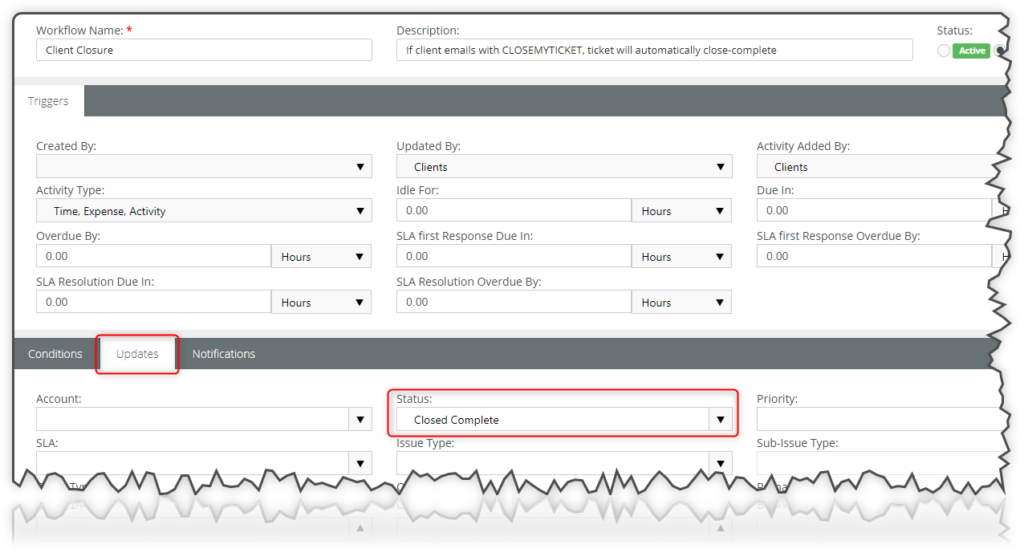
People don’t always “live” in the ticketing portal. They’ll not see updates on a tab in their browser when they have 3 dozen tabs open. But email notifications are everywhere. Even if they’re in the car. So have the important updates to a ticket update the status and send an email to the right personnel.
As we demonstrated above, you can add several conditions to an Activity trigger, so let’s make sure it doesn’t get caught by the other workflow rules we’ve set up, so trigger it this way:
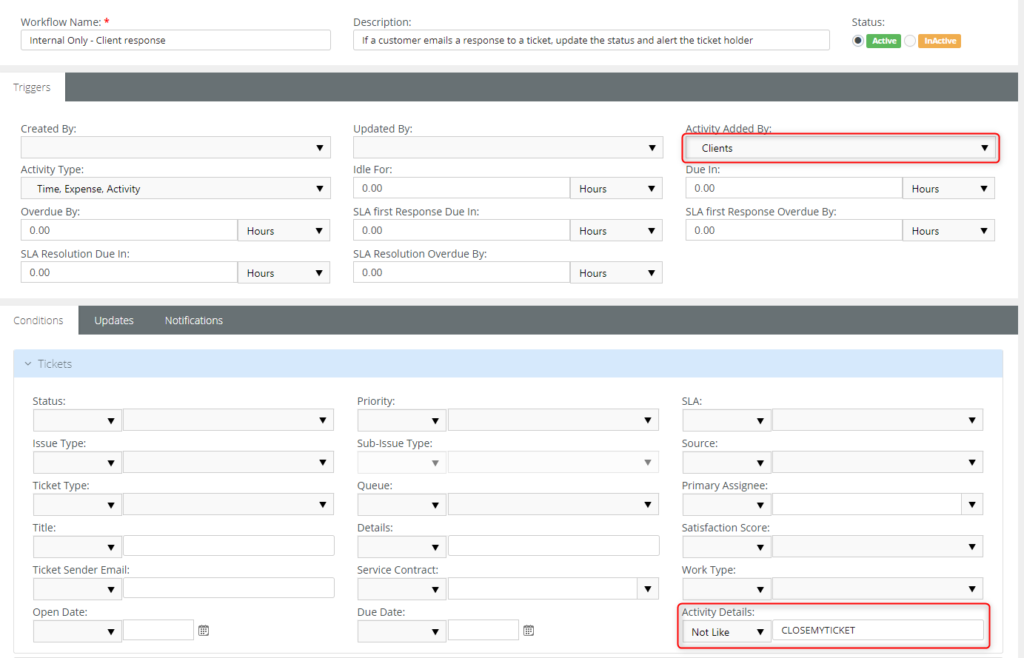
Don’t confuse this action with your Auto-close action!
This makes the trigger unique from our previous one.* We also need a different action taken to “wake up” the right person that’s helping the client:
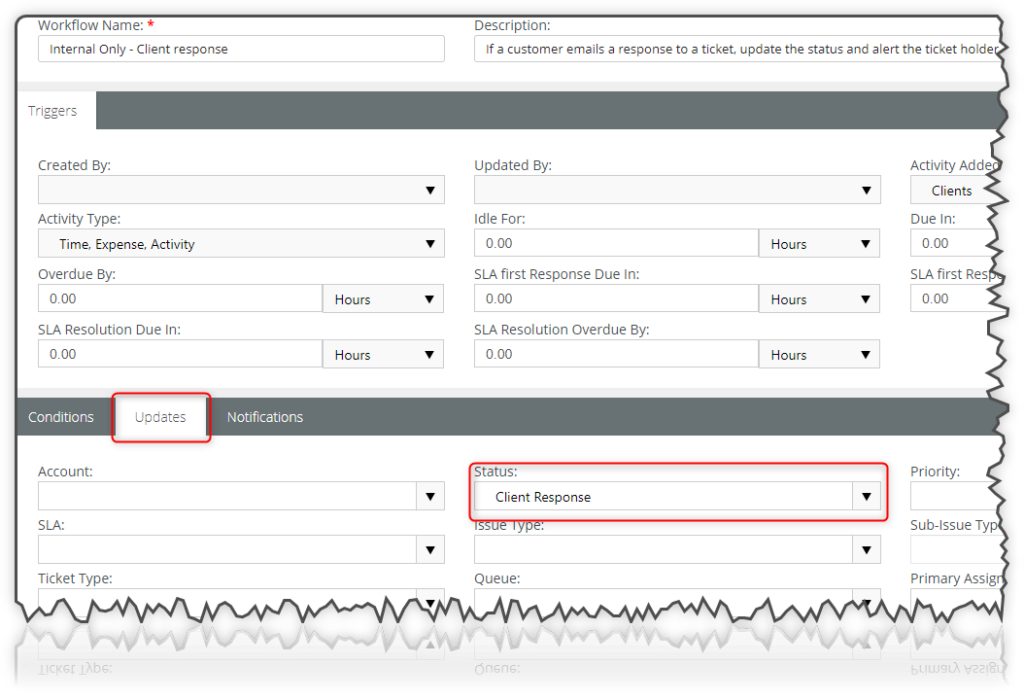
Update the Status so this is an “internal” activity
AND
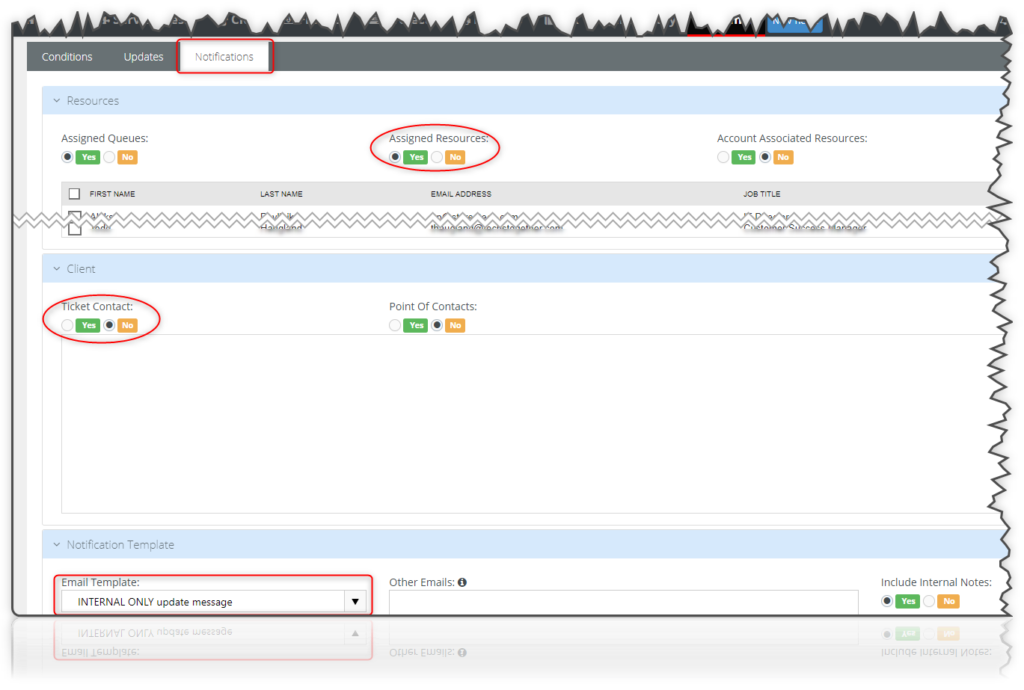
Send emails to the appropriate people ONLY
Note that there is a specific Email Template for this Notification. This will format the email. You can use several different variables to help increase the visibility as well as usability of the message that gets sent.
Something like this:
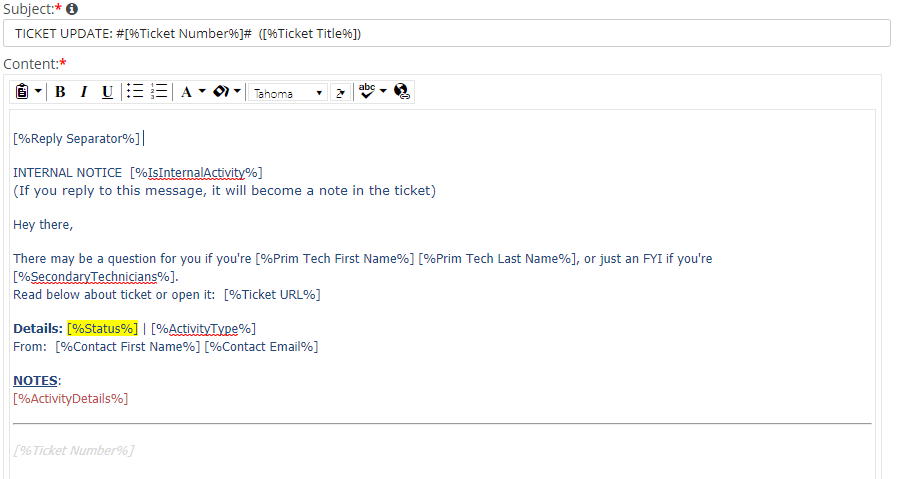
Sample Email Template
As mentioned, we’ll talk more about Email Templates and other subjects in other articles.
Other options …
Of course, if you look at the conditions that are available, there are several other things you could do with a workflow to improve working habits and save personnel time. A good example is closing a ticket if the client is satisfied, but probably forgets to tell you about it.
You send the client a message that puts the status into “Waiting for Customer” and then wait for them to respond. Since they’re happy, they go about their day. Give them a little time, and then go about yours:
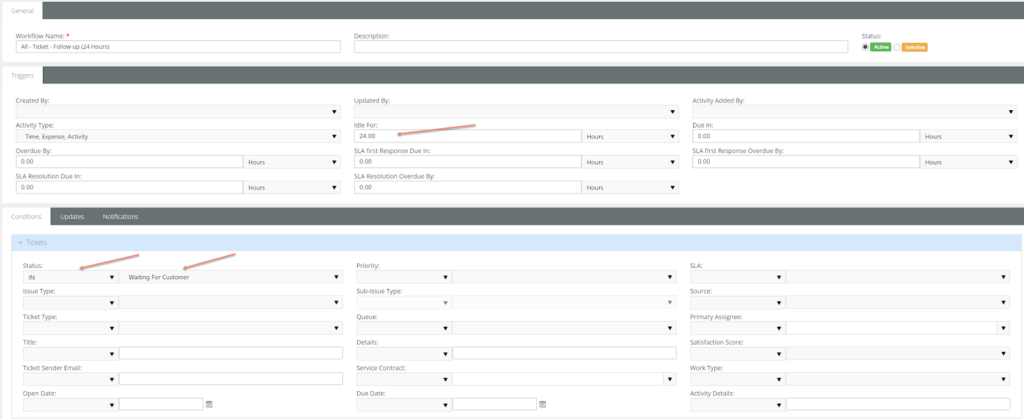
Idle time is how long a ticket has sat in it’s current status with no Activity of any type.
Obviously there are other flows that could be done. Leave a comment about one you think useful, or one you’d like to see written about below.
Automation … what drives the efficiency of true business.
My thanks to Adam Bovan (Singularitee Limited) for his help in developing this article.